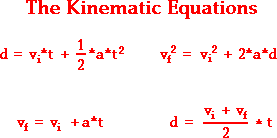Nik wrote:
Thrust should already be given from the engine's specifications and the throttle.
Interestingly, I've run into a very similar problem earlier - actually for Kerbal Space Program, I was writing a trajectory calculation tool for extremely low TWR spacecraft, which couldn't be approximated with point burns. What I ended up doing was to set a time step ("frame"), calculate the total applied acceleration in this frame, approximate the long burn as a set of tiny ones, one every frame, after every burn I calculated the new orbit and advanced by one frame by advancing the vessel's true anomaly by the given amount.
Interestingly, I've run into a very similar problem earlier - actually for Kerbal Space Program, I was writing a trajectory calculation tool for extremely low TWR spacecraft, which couldn't be approximated with point burns. What I ended up doing was to set a time step ("frame"), calculate the total applied acceleration in this frame, approximate the long burn as a set of tiny ones, one every frame, after every burn I calculated the new orbit and advanced by one frame by advancing the vessel's true anomaly by the given amount.
If you were to do it without "frames" you would need calculus i think.








































